Our human history represents a continual transition towards civilization, whereby we have shed our intrinsic primitive nature in favor of constructed social conventions. Holistic methods, which were derived from a close relationship to the natural world, have since been replaced by technological and artificial procedures. As such, much of what makes us characteristically human has become unfamiliar to us. Ito Laïla’s exhibition – KASALA – tries to mend this divide by creating sublime, animalistic sculptures that embody these primal qualities and strive to reintroduce them into our psyche. Ideals of freedom and independence have become purely conceptual aspects of our society, however it seems to neglect what these ideals truly are. Instead, Laïla creates works that appeal to our primitive nature, admiring both the beauty and obscenity of living beings.
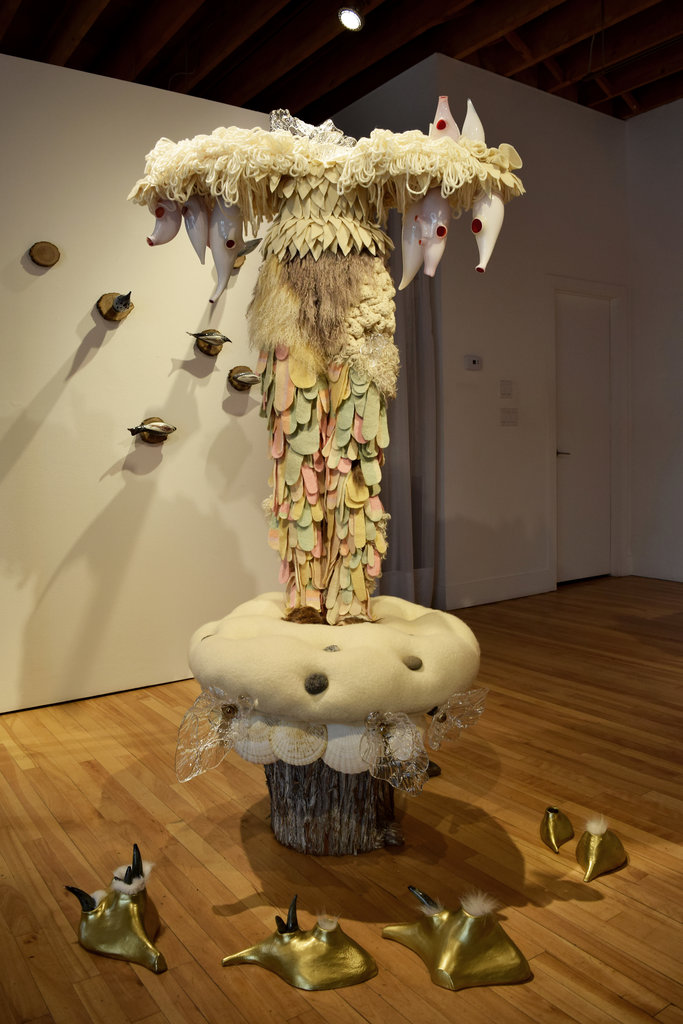 Ito Laïla, Mimi got a crab in her eye, 2016, glass, clay, Canadian wool blanket, polyester, Trois Pistoles pebbles, shells, cedar, deer fur, sheep wool, otter fur and recycled wool crochet, dimensions variable. Courtesy of Walnut Contemporary
Ito Laïla, Mimi got a crab in her eye, 2016, glass, clay, Canadian wool blanket, polyester, Trois Pistoles pebbles, shells, cedar, deer fur, sheep wool, otter fur and recycled wool crochet, dimensions variable. Courtesy of Walnut Contemporary
KASALA focuses on a new human dimension in Laïla’s work; friendship between 5 women, her and four of her friends, one of which recently passed away. These are the praises to her friends, an ode to friendship, where she sketches their imaginary portraits, of dreams, of power and beauty, in which her vision and theirs are interleaved. Incorporated into the exhibition by the sensitive curating of Ibérina Raquel Vilhena there are works by guest artists: Myrianne D. Guigère, Mélodie Dulck and Sophie Séguin, artworks that were inspired by Laïla.
Laïla works employ a vast array of mediums, ranging from solid materials like clay, concrete, wood, and metal, to animal furs and fabrics. In effect, the combination of these hard and soft, manmade and natural elements further lend to the intrinsic complexity of the works. They are solid yet they have a certain ambiguity of form; although they are largely surreal and nondescript, the composition of these sculptures are familiar. They mimic animalistic features, only enigmatically reimagined into dream-like beings.
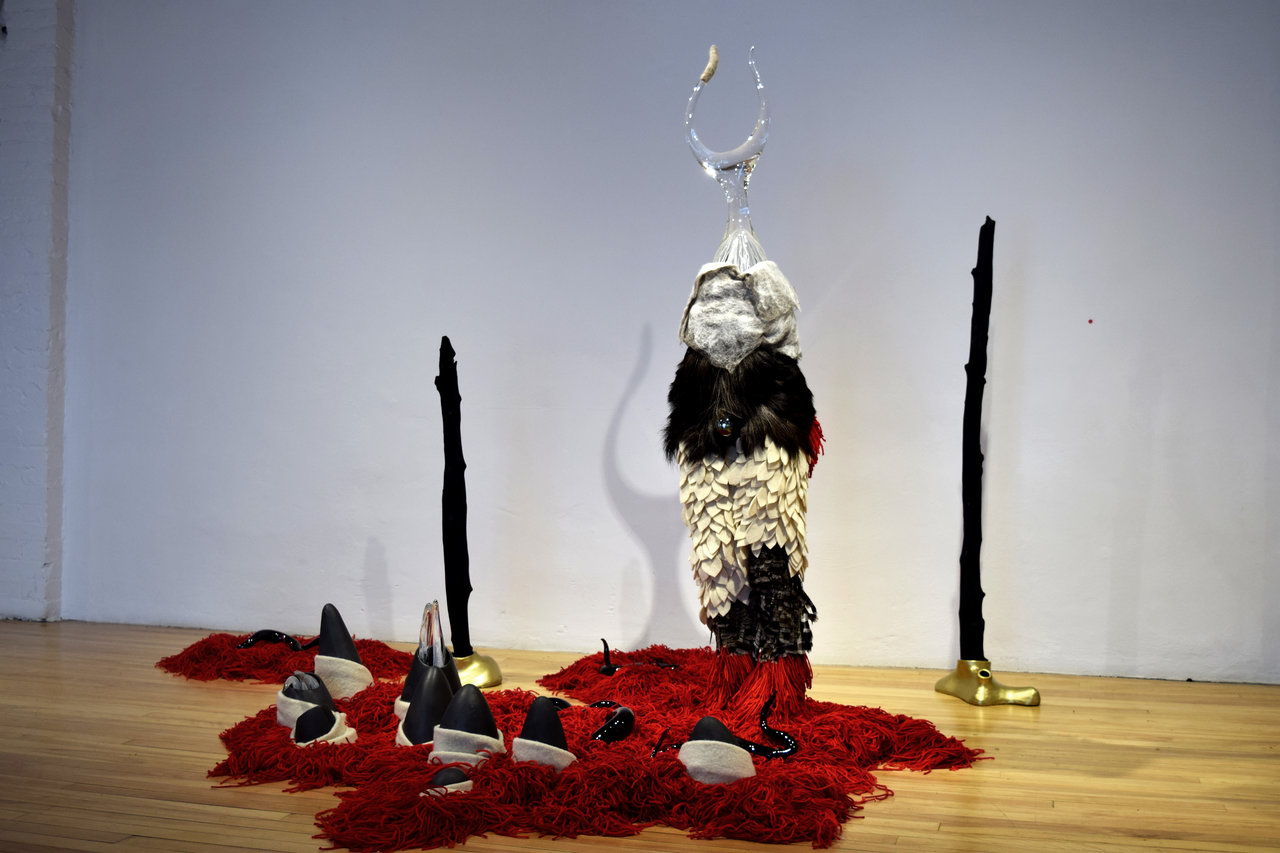 Ito Laïla, Sophie — I don’t give a damn!, 2016, glass, felt, polyester, Canadian wool blanket, moose fur and partridge feathers, dimensions variable. Courtesy of Walnut Contemporary
Ito Laïla, Sophie — I don’t give a damn!, 2016, glass, felt, polyester, Canadian wool blanket, moose fur and partridge feathers, dimensions variable. Courtesy of Walnut Contemporary
Upon looking at the works, one can immediately notice the mastery behind the use of the materials, especially when the materials used are so diverse and require completely different processes. For example, “Mélodie – Because we have it all” is a human-sized, imposing creature fashioned with glass, clay, polyester, coyote and fox fur, cork, fabric, and granite. The result is not only a sculpture that harmoniously combines a multitude of contradictory objects, but also embodies both earthly and biological elements. At first, it is slightly unnerving to see: an ominous figure standing motionless in the corner that, although stands level with the viewer’s eye, looms over the entire space. However, drawn in by awe, I was compelled to examine the details and how each component and material interacts with one another: namely between the terrestrial and the anatomical.
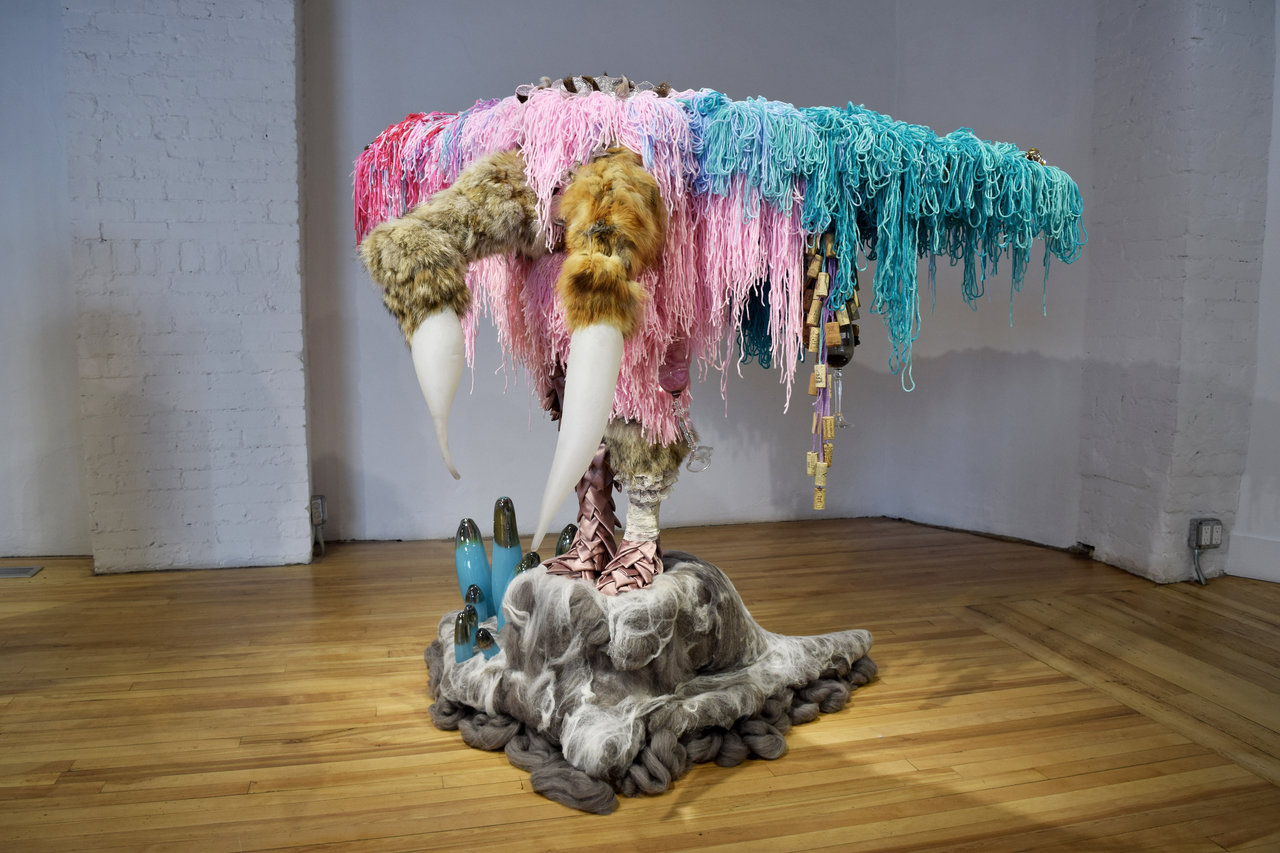 Ito Laïla, Mélodie — Because we have it all, 2016, glass, clay, polyester, fox fur, coyote fur, felt, recycled satin blanket, cork and granite, dimensions variable. Courtesy of Walnut Contemporary
Ito Laïla, Mélodie — Because we have it all, 2016, glass, clay, polyester, fox fur, coyote fur, felt, recycled satin blanket, cork and granite, dimensions variable. Courtesy of Walnut Contemporary
Then, of course, there are Laïla’s more delicate and light-hearted works like “Melany – one life to live.” Depicted is a fox-like creature seemingly nestled in a cloud with glass wisps flying above. The delicate glasswork is meticulously crafted to imply an airy, weightless effect, which detracts attention from the structural supports and supplants that attention to the figures.
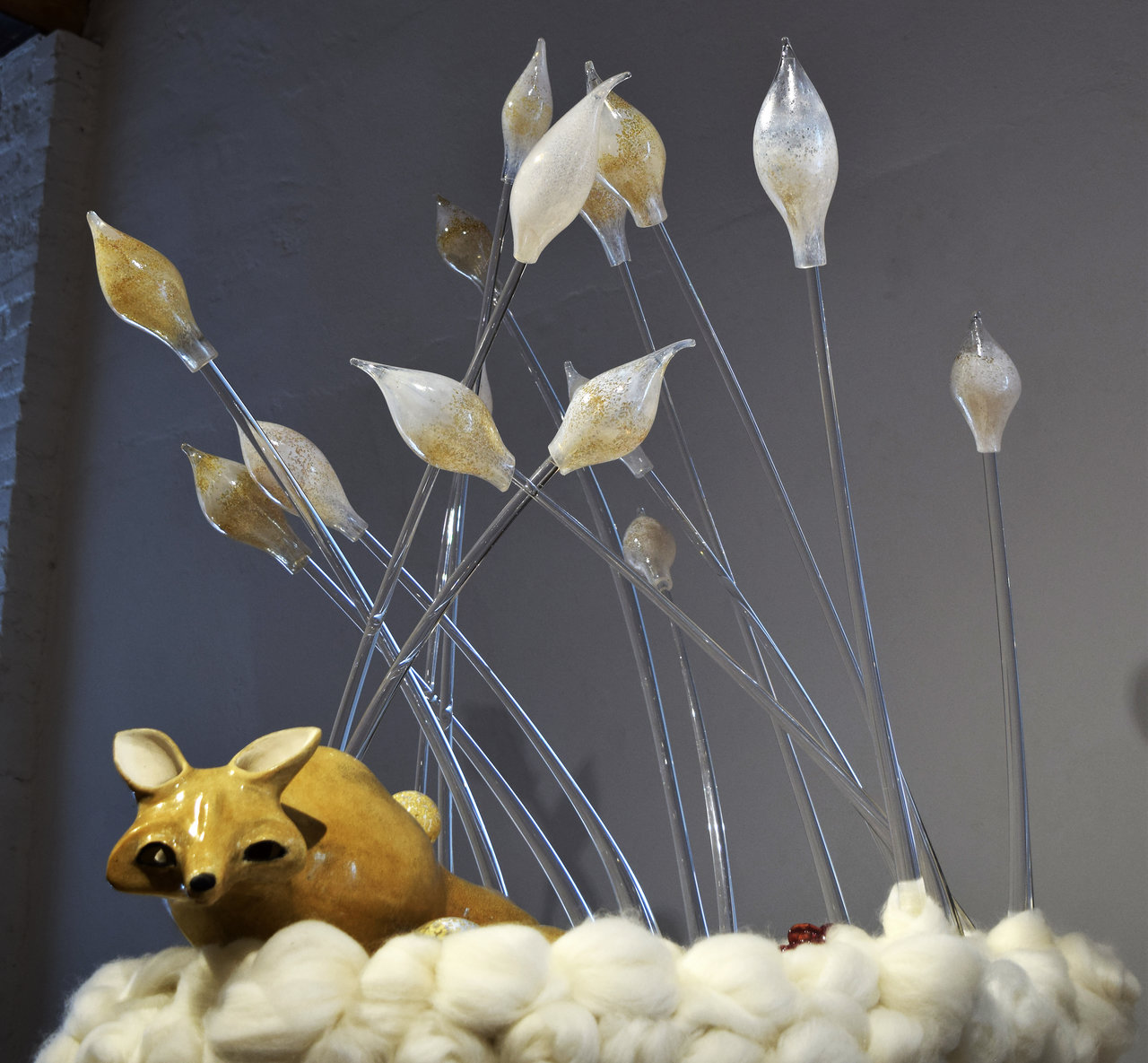 Ito Laïla, Melany — one life to live, 2016, clay, felt and glass, dimensions variable. Courtesy of Walnut Contemporary
Ito Laïla, Melany — one life to live, 2016, clay, felt and glass, dimensions variable. Courtesy of Walnut Contemporary
The inherent polychotomy of Ito Laïla’s works – with regard to the array of mediums used, concepts explored, and feelings conveyed – is truly unique and interesting. She demonstrates an expertise and curiosity in a wide array of material processes along with a drive to seamlessly draw them together. Ideas regarding human and animal relationships with the primal are complex and non-uniform, leaving the audience complete freedom to derive their own understanding of the pieces. The simultaneous liveliness and hollowness, dynamism and immobility, earthliness and humanity creates a fascinating exploration into our common primal heritage.
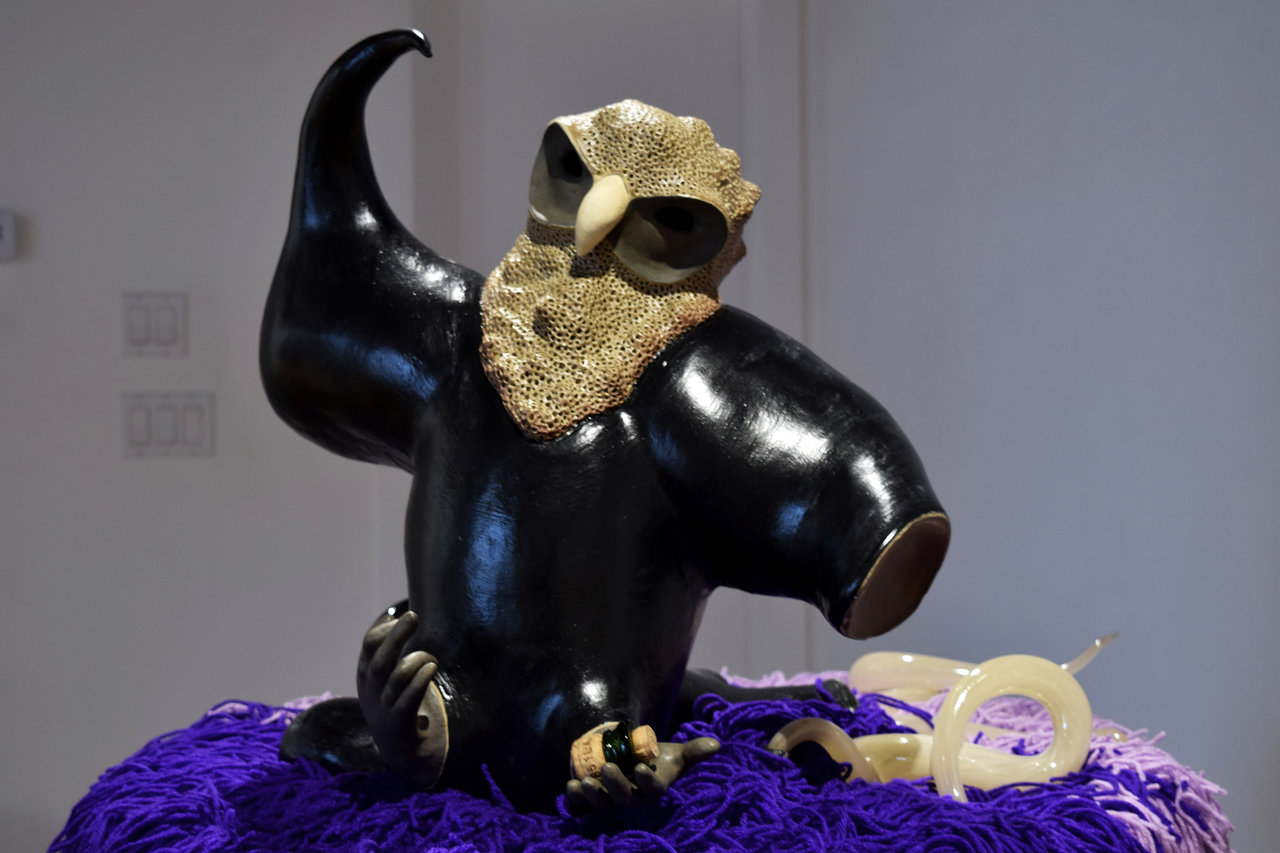 Ito Laïla, Night Shift, 2016, clay, wool and Polyester, dimensions variable. Courtesy of Walnut Contemporary
Ito Laïla, Night Shift, 2016, clay, wool and Polyester, dimensions variable. Courtesy of Walnut Contemporary
Simon Termine
*Exhibition information: September 8 – October 15, 2016, Walnut Contemporary, 201 Niagara Street (entrance at side lane). Gallery hours: Wed – Sat, 1 – 6 p.m.
